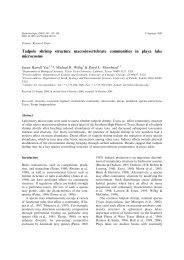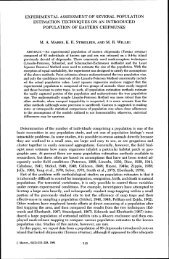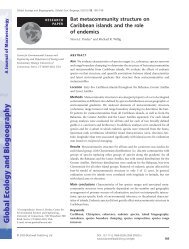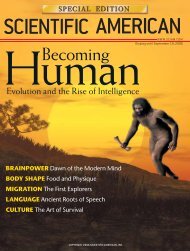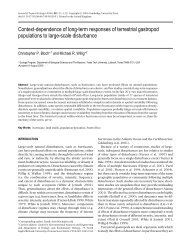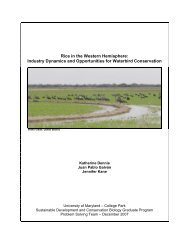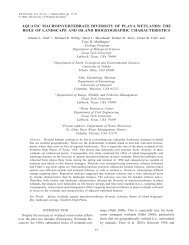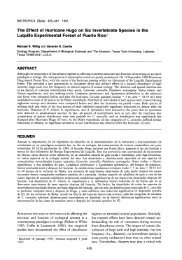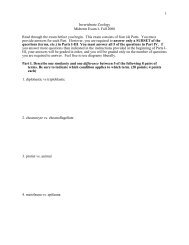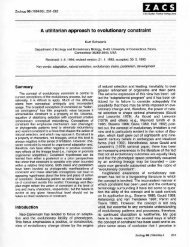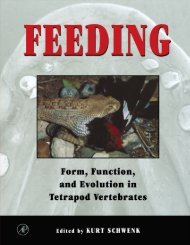Comparative biology and the importance of cladistic classification: a ...
Comparative biology and the importance of cladistic classification: a ...
Comparative biology and the importance of cladistic classification: a ...
You also want an ePaper? Increase the reach of your titles
YUMPU automatically turns print PDFs into web optimized ePapers that Google loves.
CLADISTIC CLASSIFICATION<br />
A Reptilia Aves<br />
B Reptilia<br />
Figure I. The phylogeny <strong>of</strong> living reptiles <strong>and</strong> a classic example <strong>of</strong> evolutionary versus <strong>cladistic</strong><br />
<strong>classification</strong>. (A) an evolutionary-taxonomic <strong>classification</strong>; (B) a <strong>cladistic</strong> <strong>classification</strong>. Note that<br />
<strong>the</strong> evolutionary <strong>classification</strong> assumes that <strong>the</strong> ancestors <strong>of</strong> birds were reptiles, but <strong>the</strong> prerise point<br />
along <strong>the</strong> clade where this transformation occurred is unspecified. The situation is actually morc<br />
confusing than shown, because if <strong>the</strong> next outgroup, Synapsida/Mammalia, were illustrated, <strong>the</strong><br />
polygon enclosing <strong>the</strong> paraphyletic ‘Reptilia’ would become more complex, including <strong>the</strong> base <strong>of</strong> <strong>the</strong><br />
mammal stem (Synapsida, considered to be reptiles) but not its terminal end (Mamrnaliaj.<br />
fea<strong>the</strong>rs, <strong>the</strong>y fly, <strong>the</strong>y are endo<strong>the</strong>rmic, etc.) with which <strong>the</strong>y share a common<br />
ancestor. The formal taxon Reptilia in such a scheme is paraphyletic because it<br />
excludes one descendant lineage, <strong>the</strong> birds. Birds are accorded <strong>the</strong>ir own taxon<br />
(Aves) <strong>of</strong> equal rank as Reptilia. The <strong>cladistic</strong> taxon Reptilia must include birds<br />
because <strong>the</strong>y share a common ancestor with all <strong>the</strong> o<strong>the</strong>r, traditionally named<br />
reptilian taxa. Hence birds are regarded as a specialized subset <strong>of</strong> reptiles <strong>and</strong><br />
are named as such (e.g. Rowe, 1986). The potential problem explored in this<br />
paper is that, to a naive investigator, lizards <strong>and</strong> crocodilians must appear more<br />
closely related than ei<strong>the</strong>r is to birds. Can this false notion mislead his or her<br />
evolutionary conclusions?<br />
71



